Lake Superior Coho Salmon
Coho Salmon, Oncorhynchus kisutch, also known as Silver Salmon, are widely considered one of if not the best tasting fish in all of Lake Superior. It’s no surprise to anyone who has eaten one that they have earned the nickname, “Candy Fish”
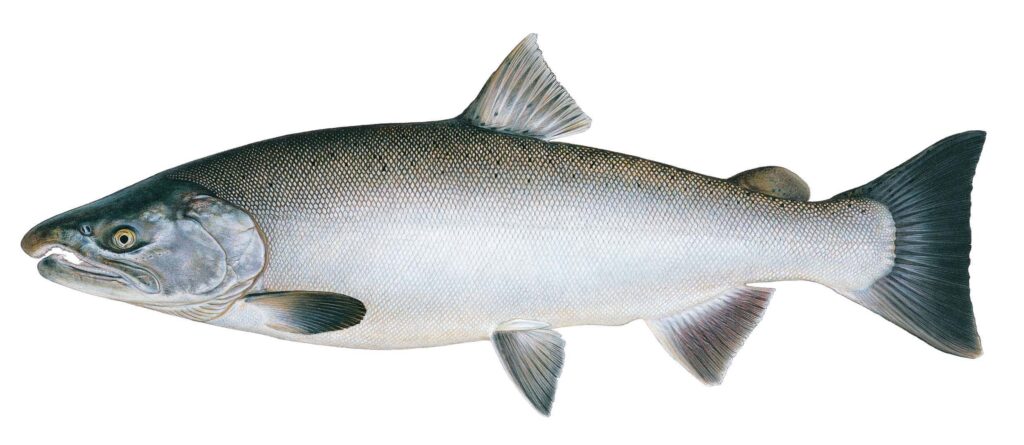
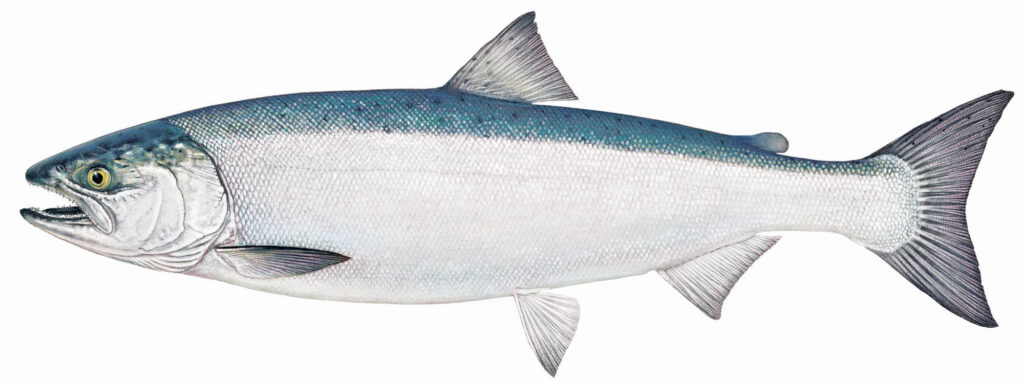
History: Coho salmon are relative newcomers to the Great Lakes. Overlooked during the late 1800’s salmonid stocking frenzy, coho were first introduced to Lake Superior by the state of Michigan in 1966. At present, cohos in Lake Superior are nearly all the result of natural reproduction. Cohos typically live for a year and a half in streams, then migrate down to Lake Superior where they spend another year and a half before returning to spawn.
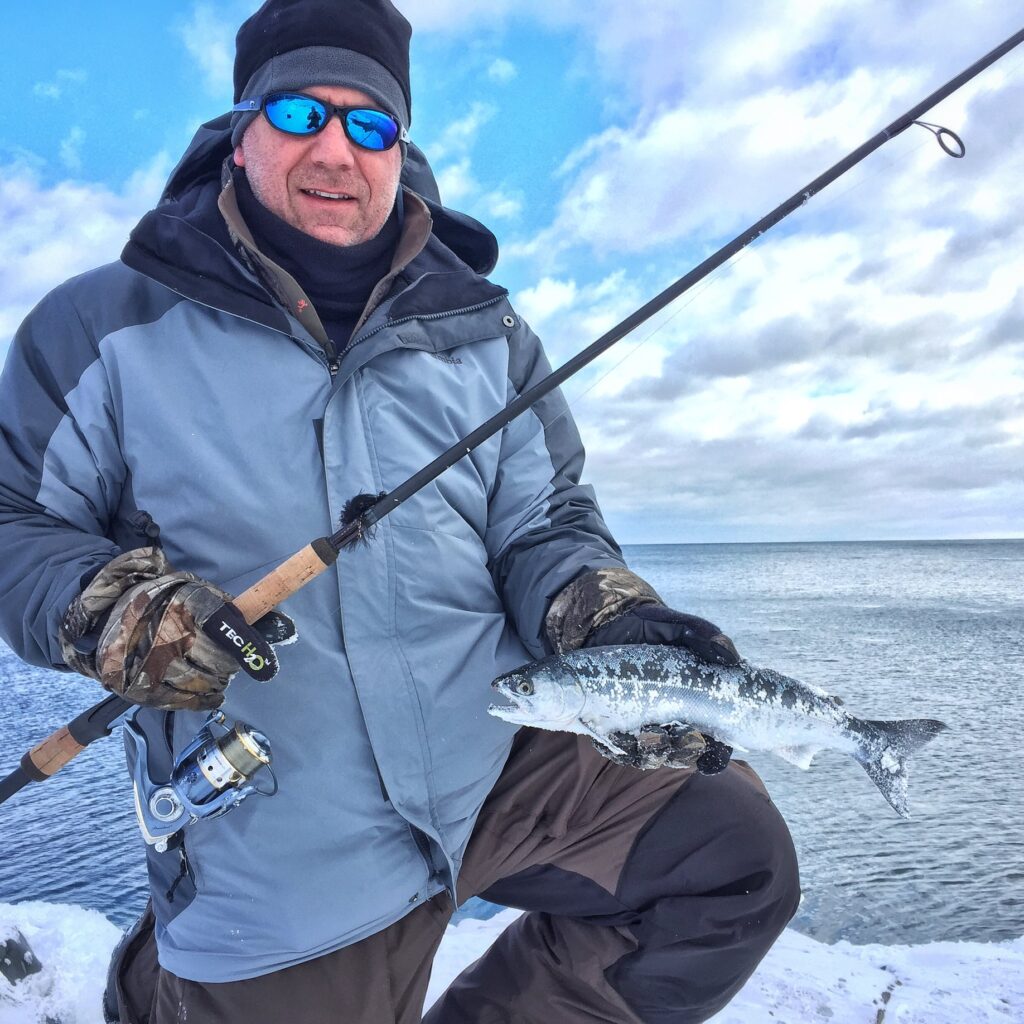
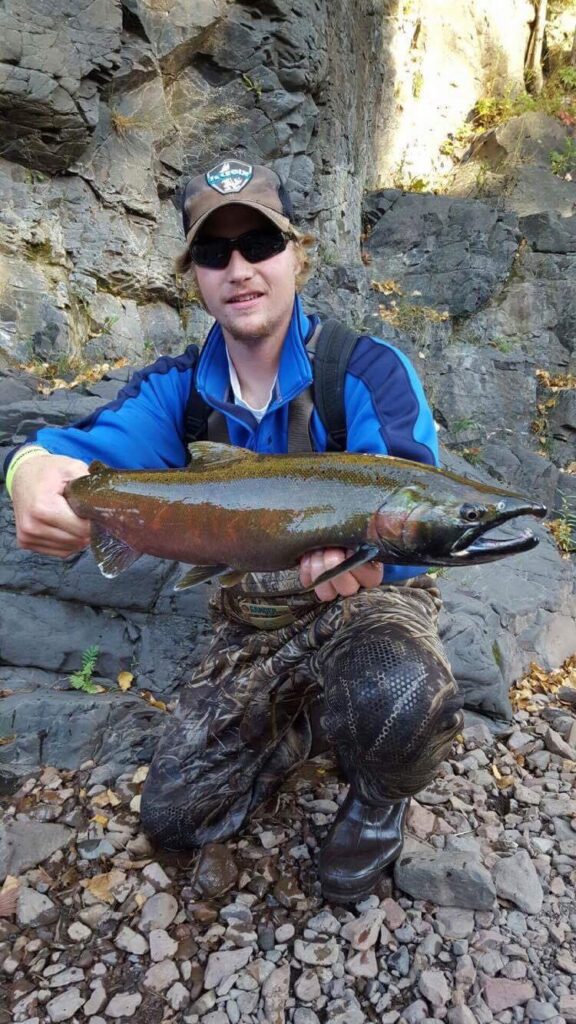
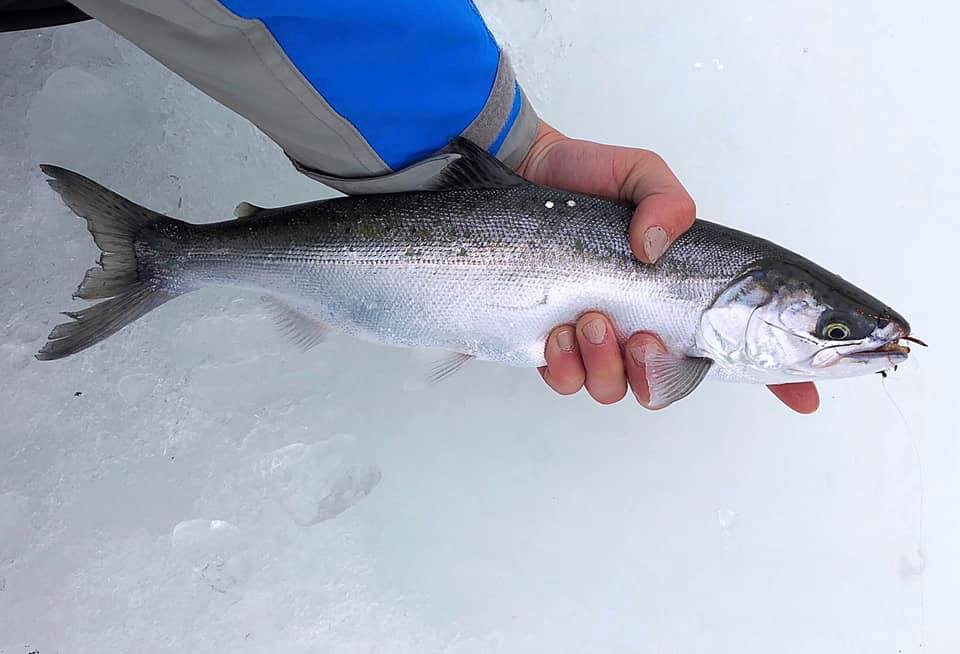
Minnesota: Coho were stocked in Minnesota waters beginning in 1969. Over the next several years, growth rates for coho were found to be slow due in part to Lake Superior’s very cold, infertile environment. This resulted in the small size of most coho harvested by anglers. Fall returns to the limited, short run habitat of North Shore streams were low, and spawning migrations occurred very late in the year. In addition, the cost per fish produced in the hatchery was high. It was noted that Minnesota’s hatchery fish did not significantly contribute to coho harvest, and historically high catch rates occurred without stocking. Most coho contributions to the sport fishery, both stream and lake, were found to be naturally produced fish that had moved into Minnesota waters from other jurisdictions. The stocking program was discontinued in 1972 after failing to meet management goals.
Movement: During winter, coho move up and down the Minnesota coast, and can be caught from shore or the break-walls using a variety of techniques. Cohos begin concentrating along Minnesota’s shoreline to take advantage of forage species from February through May, particularly as smelt begin staging off North Shore river mouths for their own spawning runs. As summer advances, cohos tend to move up the Minnesota shoreline and by August, are caught mostly in the Tofte and Grand Marais area.
Size: In Lake Superior, coho salmon can grow as large as 26″ and weigh up to 5 lbs., but fish that size are relatively rare. Most coho run much smaller and, anglers primarily catch two year-old fish. Coho caught by both summer and winter anglers are more likely to be 16″ to 22″ and between 1.5 to 3 lbs. The larger fish tend to be caught during the limited spawning runs as these are mature 3-year old adults.

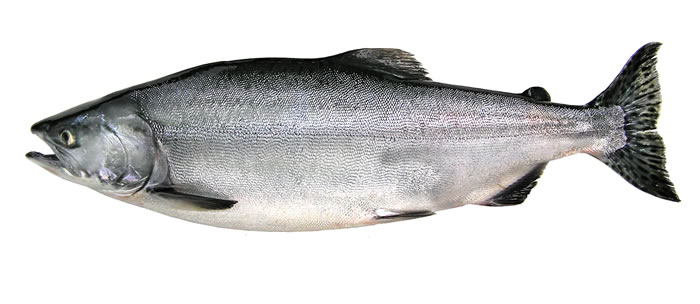
Diet: While traveling from stream to lake, young coho feed on a variety of copepods and waterfleas. Immature and adult coho eat mostly small fishes, especially smelt and small cisco, but diet also include opposum shrimp and terrestrial insects that fall into Lake Superior.
Spawning: Most coho salmon return to spawning streams in their third year of life. Like chinook salmon, they stage off North Shore river mouths in late September and October waiting for fall rains to raise rivers before moving upstream. Spawning for coho occurs from roughly mid-October to mid-November. Females excavate redds in areas of suitable gravel, then spawn with a single male. After spawning, females move just upstream to excavate another redd. The gravel and sand from the new redd drifts down to cover the first redd and its’ eggs. This is repeated until the female has deposited all her eggs. Usually both the male and female die shortly after spawning is over.
A single female can lay anywhere from 2,600 to 6,000 eggs, and egg production is size-dependent on the size of the female. Natural reproduction has never been very good in North Shore streams. Since most of these streams are short-run, they offer a limited amount of spawning and rearing habitat below barrier falls, and competition for resources can be high. South Shore streams from Superior to Ashland on Chequamegon Bay offer coho far more suitable spawning and rearing habitat.
Coho alevins, the free-swimming embryos, hatch in the spring and remain in the gravel for several weeks while their fins develop. Once sufficiently developed, young coho swim up into the current and begin to feed. In ideal habitat with sufficient resources, young coho will remain in the stream up to 18 months. In poor or limited habitat, young coho may migrate to Lake Superior shortly after the swim-up stage which lessens their chance for survival.
Fishing: Coho can appear in streams just about anywhere along the North Shore, but Mid and Upper Shore streams seem take coho more consistently. Fall-run fish key heavily on rainfall and rising flows, so your best bet is to monitor stations, and explore streams when the opportunity arises. Coho will readily take egg patterns, various streamers, artificials and hardware.
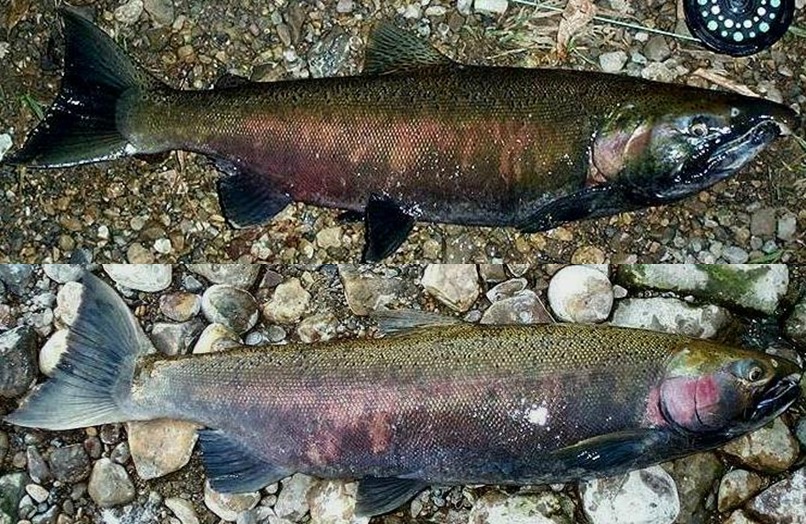
In winter, look for coho along the shore and at the break-walls between February through May when the smelt return to streams to spawn. Coho will take a variety of baits fished below floats, on bottom rigs in shallower water and hardware.
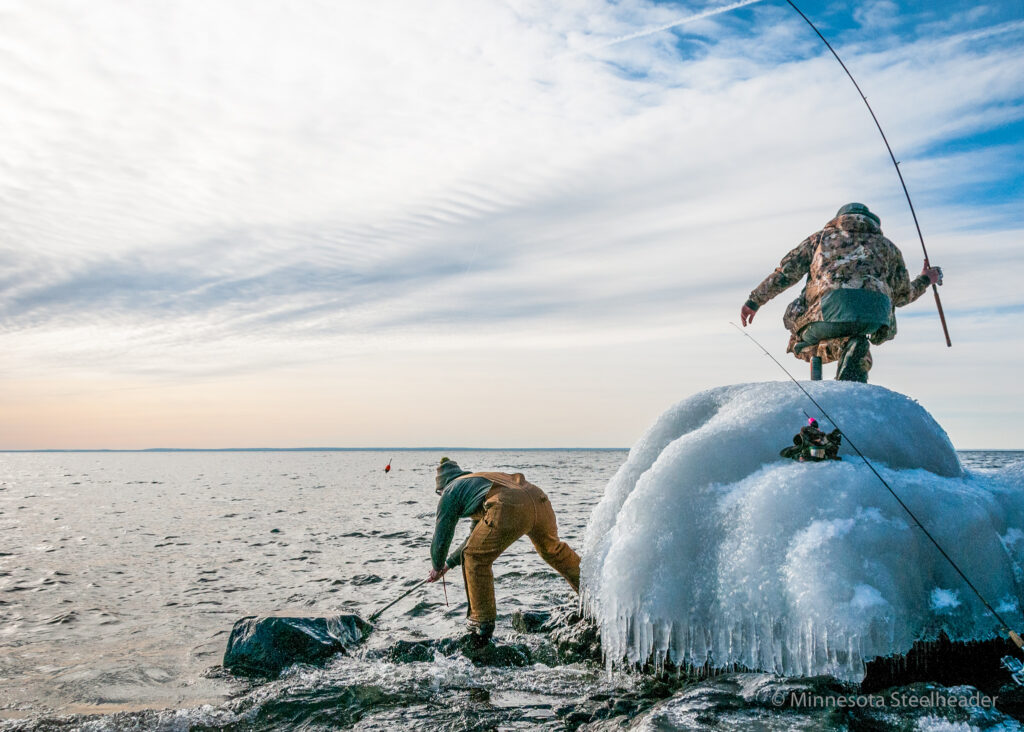
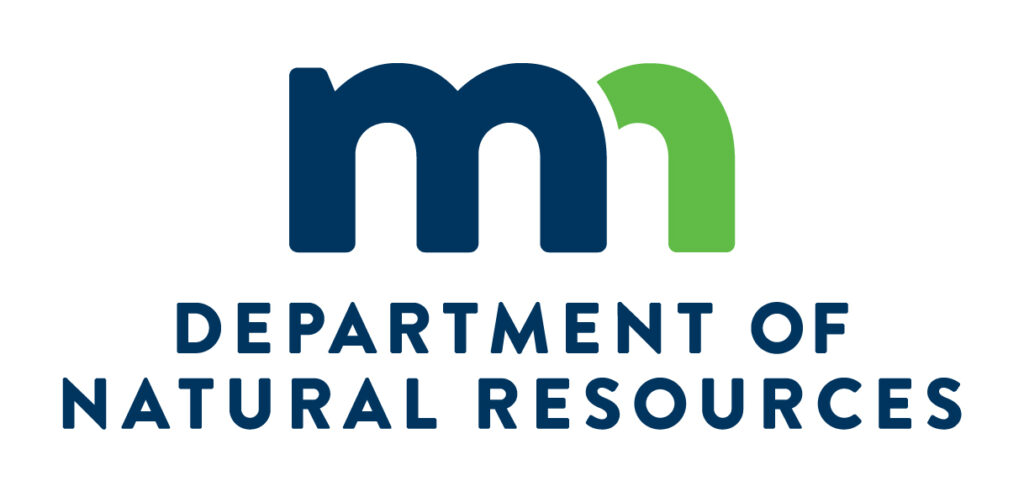
Fisheries Management Plan for Minnesota Waters of Lake Superior
This plan is a comprehensive guide on how to best manage Minnesota’s portion of the Lake Superior fishery. The plan is written for use by both the MN DNR Fisheries Management Section and citizens interested in the management of Minnesota’s Lake Superior fishery resource. This plan is based on a fish community approach to fisheries management and highlights why this approach is necessary
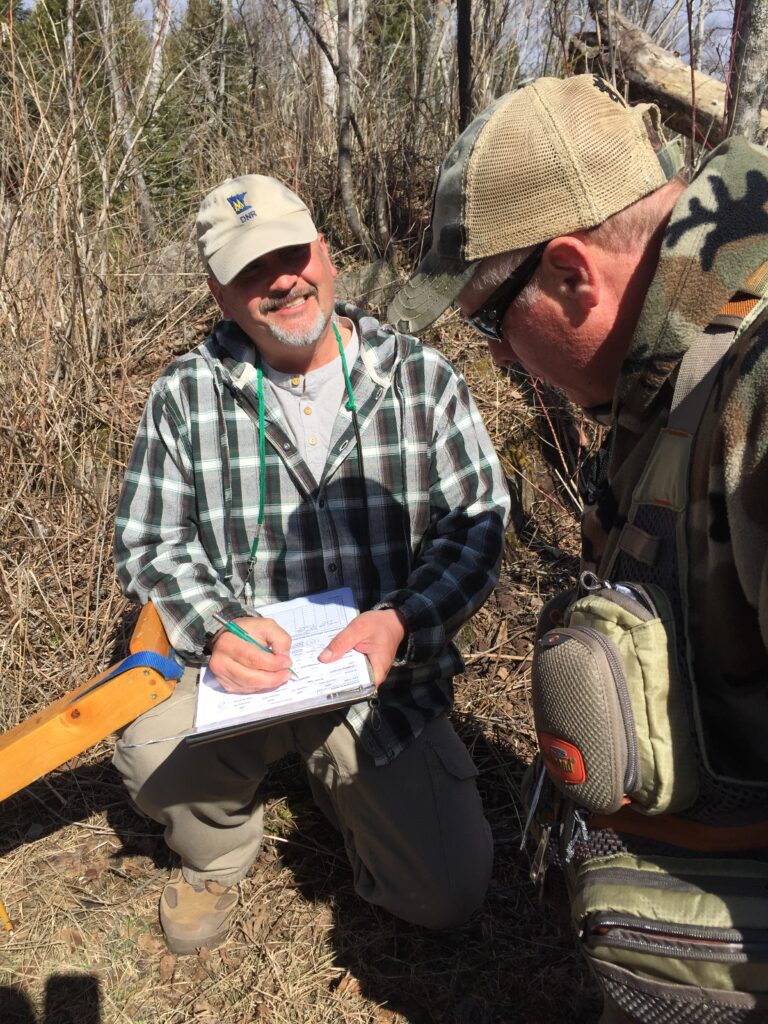
MN DNR Spring Creel Survey
The first spring creel survey was implemented in 1992 to monitor the rehabilitation of Rainbow Trout in Minnesota waters after the species declined in the 1960s. The survey was designed to target anglers who fished for Rainbow Trout as they migrated upstream in tributaries to spawn.
The annual spring creel survey typically begins once tributaries thaw and are fishable. The spring creel survey has provided useful information for many other species in Lake Superior. Brook Trout (Salvelinus fontinalis), one of two native sport fish to Lake Superior, are typically the second most reported species in the spring creel survey.

The Coho Salmon illustrated above are so incredibly scientifically accurate, right down to the scale size, placement, and amount. These illustration and hundreds more have been beautify created by Joseph Tomelleri. CLICK HERE to learn more about Joe, his passion, and how to purchase your favorite image.
